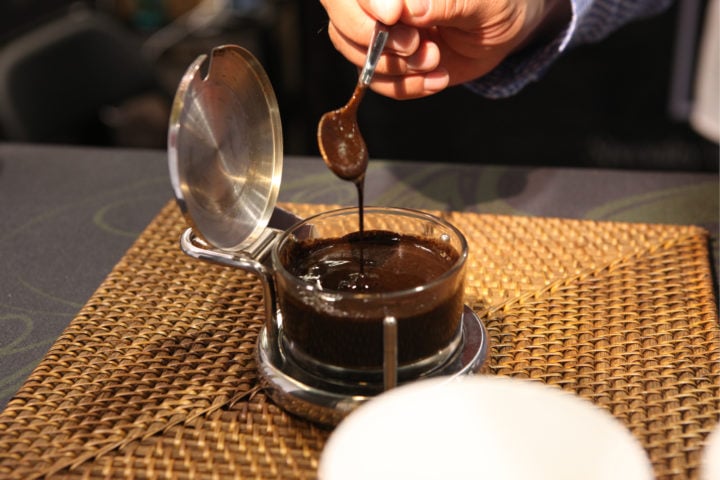
Ever since the pandemic started, everybody seemed to have found a common hobby: baking. And when it comes to baking, vanilla bean paste is a top must-have ingredient in your pantry. From cakes to cookies, puddings to ice creams, vanilla bean paste makes every baked product pleasing to the sight, smell, and taste!
Vanilla bean paste is placed in jars and can remain in good condition for up to 3 years when stored in a cool, dark place, making it an excellent option for bakers. For this reason, vanilla bean pastes sell up quickly, and you might need a substitute for it.
Vanilla beans, vanilla extract, vanilla powder, vanilla essence, maple syrup, almond extract, and honey can be alternatives. These options also provide the flavor and aroma to your baked goods and are all readily available in your local grocery shops. In this article, I will be discussing each option and comparing them to vanilla bean paste so that you can choose the best substitute for your recipe.
Table of Contents
Vanilla Bean Paste Substitutes
1) Vanilla Beans
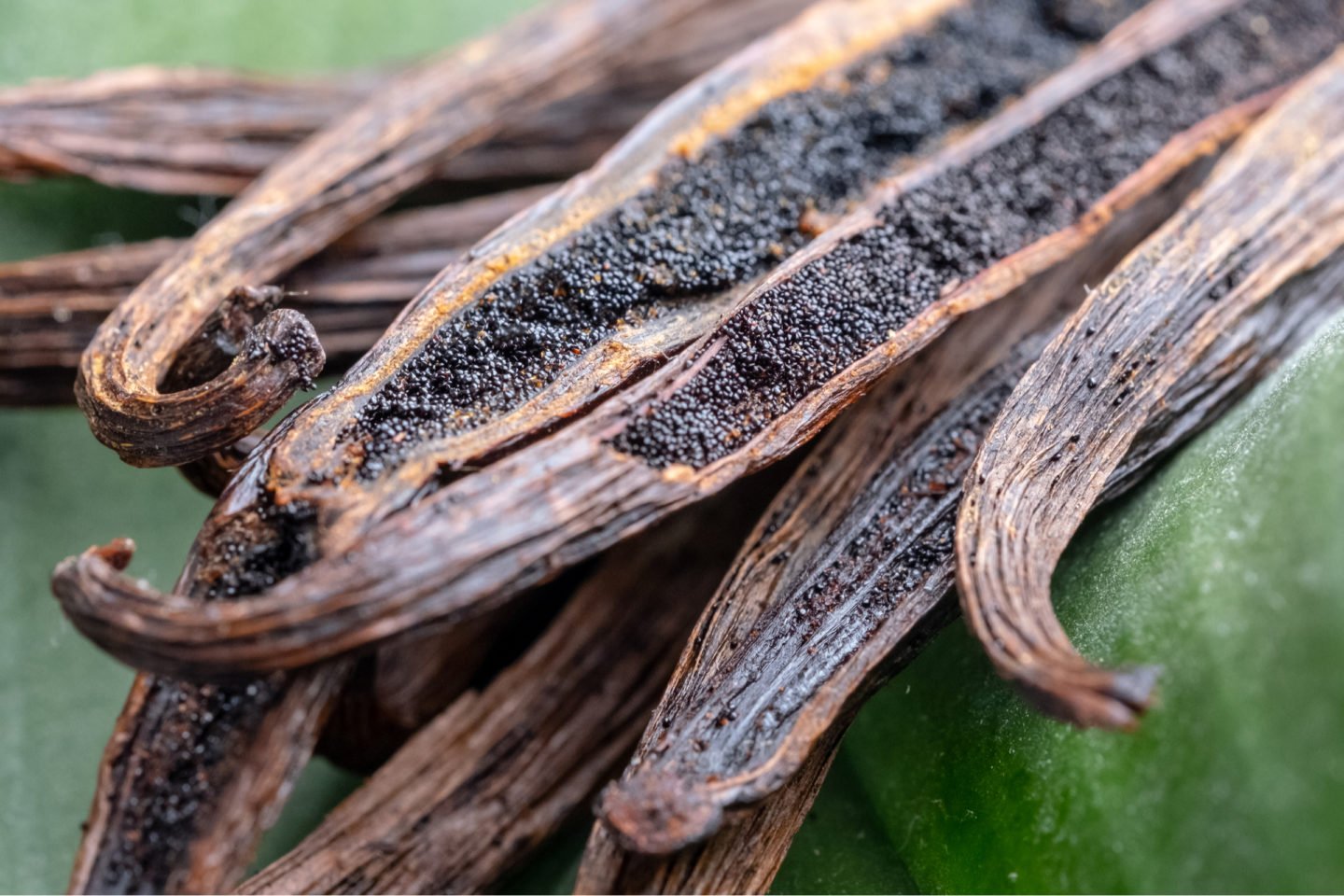
As the name implies, vanilla bean paste comes from vanilla beans or pods. After turning the pods into powder, they mix it with a little amount of vanilla extract, producing a sticky liquid with a honey-like consistency with speckles from the vanilla beans. So whenever you can’t get your hands on these vanilla paste, you can use the beans instead.
When choosing vanilla beans as a substitute, make sure that the beans are plump and fresh to get the most flavor and essence. You can either scrape and use them as is or create your vanilla bean paste using these tiny beads. Vanilla beans are a perfect addition when making desserts that require heating, as they spread a light color to your mixture and taste the same as vanilla bean paste.
For every tablespoon of vanilla bean paste mentioned in the recipe you’re following, you can use one whole pod and scrape the seeds. However, vanilla can go bad, especially when molds start to grow on them. You can spot molds by inspecting if there are fuzzy or spongy materials around the pod. Generally, the pod must be discarded when you notice these molds.
2) Vanilla Extract
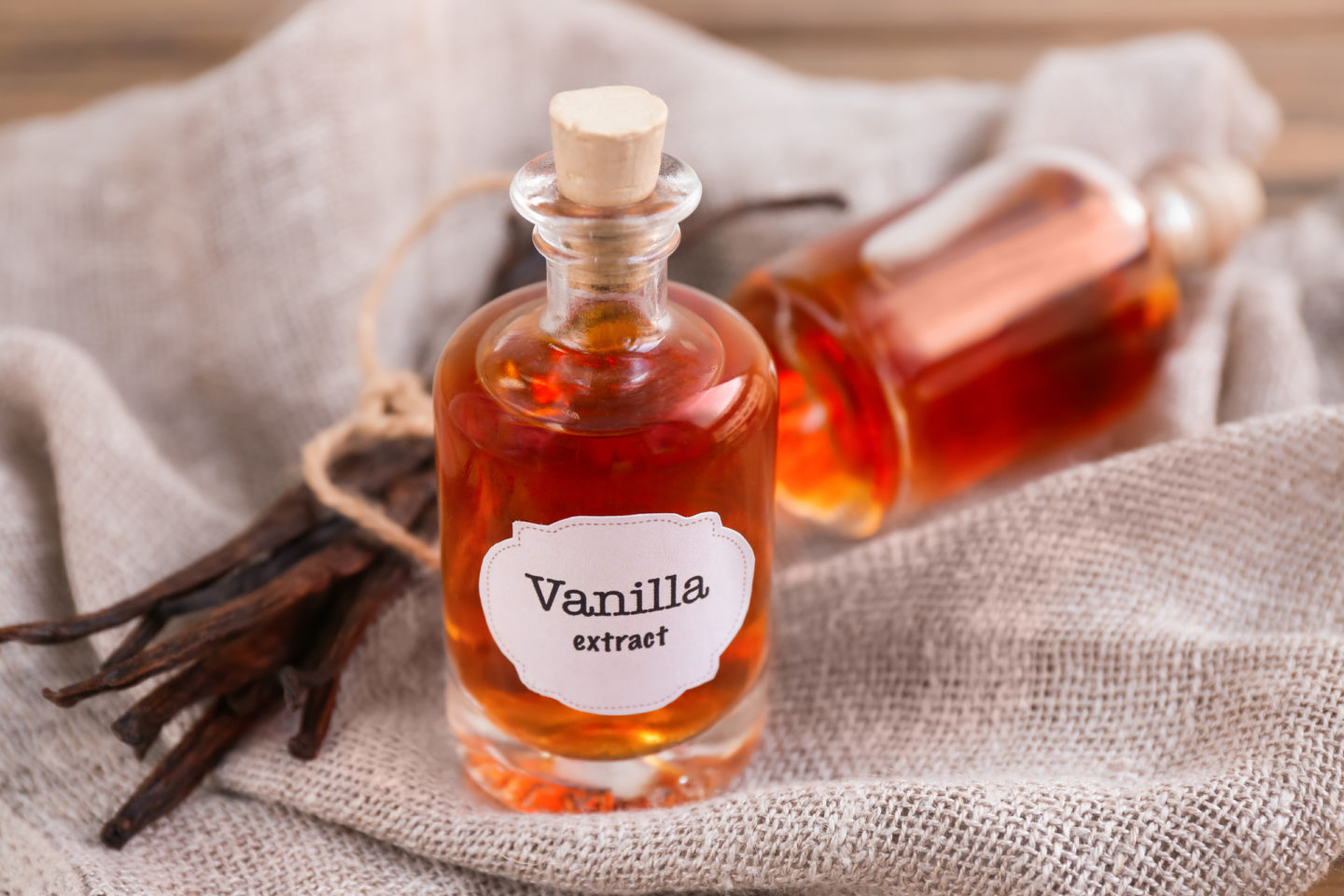
If you can’t get your hands on the vanilla bean paste, I’m sure your local grocery shops have vanilla extract, as it’s the most common form of vanilla sold worldwide. This liquid is made by softening vanilla pods with water and ethanol and then slowly filtering the mixture to produce a brown liquid. This results in the common vanilla extract mentioned in most famous baking recipes.
Due to the increased demand, some manufacturers produce artificial vanilla extracts, which are mainly composed of a flavor compound called vanillin. These synthetic extracts present as a lighter liquid with a much lesser vanilla-like aroma and a lot sweeter than the pure vanilla extracts. Since these artificial extracts are made from synthetic vanillin, you can quickly tell the difference in its taste compared to the hundred flavors of the pure vanilla extracts.
Compared to the vanilla bean paste, although you get to enjoy the same flavor, you can’t get the same seed speckles that you get with the vanilla paste. Moreover, since vanilla extracts contain alcohol, you might get to taste the hint of bitterness to it. To enjoy a much closer taste and essence to the vanilla paste, make sure to purchase a pure vanilla extract.
3) Vanilla Powder
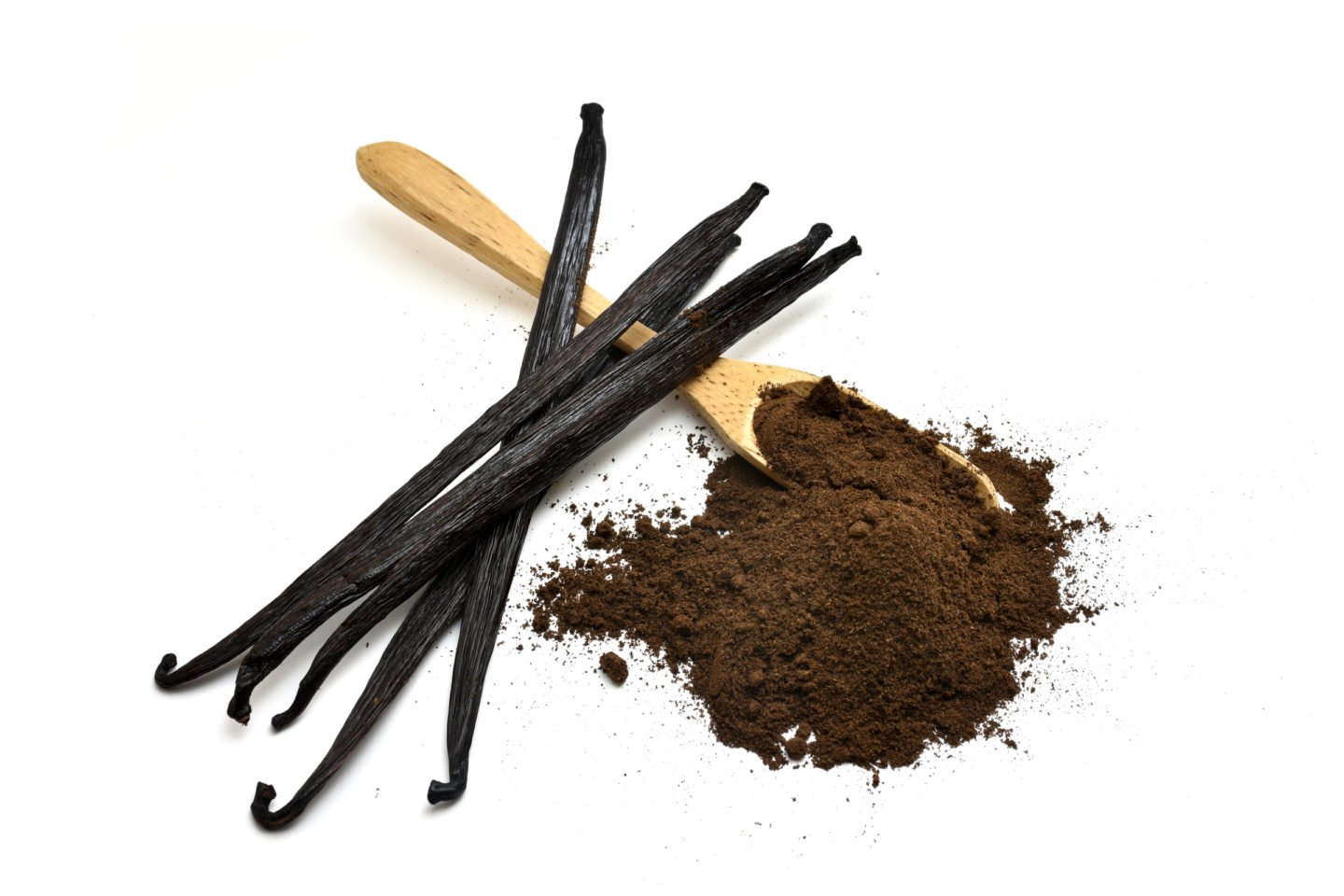
If you’re following a cake recipe that calls for a vanilla frosting and you ran out of vanilla bean paste, you should try using vanilla bean powder instead. It provides a rich, strong flavor and creates a firmer consistency as it does not contain any liquid or alcohol like vanilla extract.
Vanilla powder is made from vanilla beans, making it an excellent substitute when it’s in its pure form. Other manufacturers infuse powdered vanilla beans with confectioner sugar, making it a sweeter form called vanilla sugar. You can still use those; however, you can’t expect a pure vanilla effect on your baked goods.
If you have vanilla bean pods and would like to turn them into vanilla powder, you can do that by following a simple two-step process. First, you should dry your vanilla bean pods by either leaving them on a drying rack for a few weeks or lacing them in the oven at 50 degrees Fahrenheit for 1.5 hours.
Once completely dry, you can proceed to step two, the grinding. You can use a manual grinder or an automatic coffee grinder for this method. Grinding your vanilla bean pods with still moisture will result in a paste than a powder, so be sure that the drying process is complete before grinding. When your vanilla powder is ready, you can store it in an airtight jar for a year.
4) Vanilla Essence
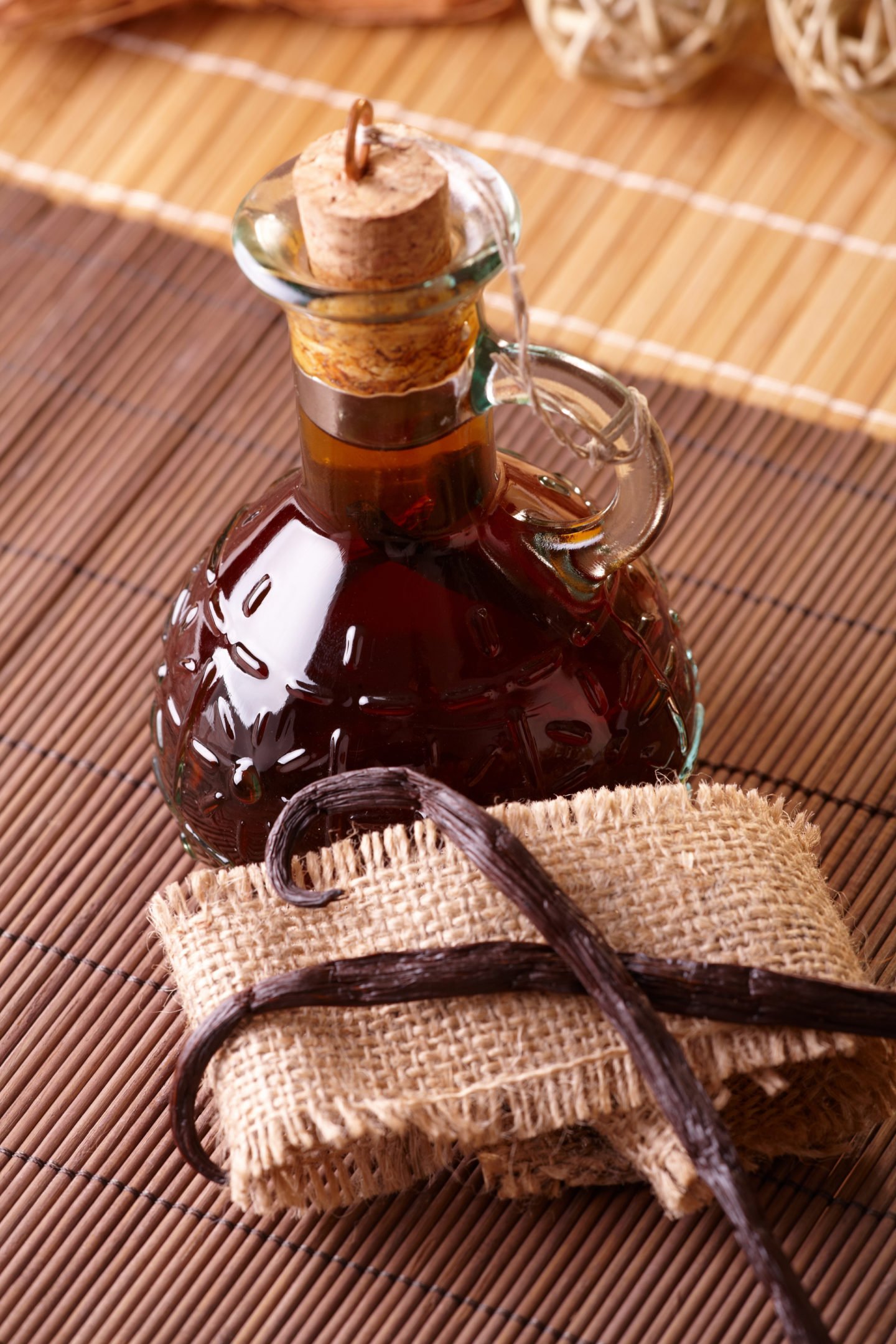
I already mentioned a synthetic form of vanilla extract, which is formally called a vanilla essence or an imitation vanilla extract. A liquid made from water, ethylene glycol, ethanol, synthetic vanillin flavor, and artificial coloring, this form of vanilla is a cheaper alternative to pure vanilla extract that is widely available.
Although it does contain the prominent vanillin flavor, note that vanilla contains 200 more compounds that contribute to its rich taste, and you can’t get that with vanilla essence. However, when you’re in a pinch and on a tight budget, you can just use the same amount of essence for vanilla extract or vanilla paste as indicated in the recipes.
This substitute is perfect for recipes that do not call for a rich, vanilla taste. For example, when making chocolate cookies, apple pie, carrot cake, or even jams, vanilla essence can be enough as it is not a primary ingredient.
5) Maple Syrup
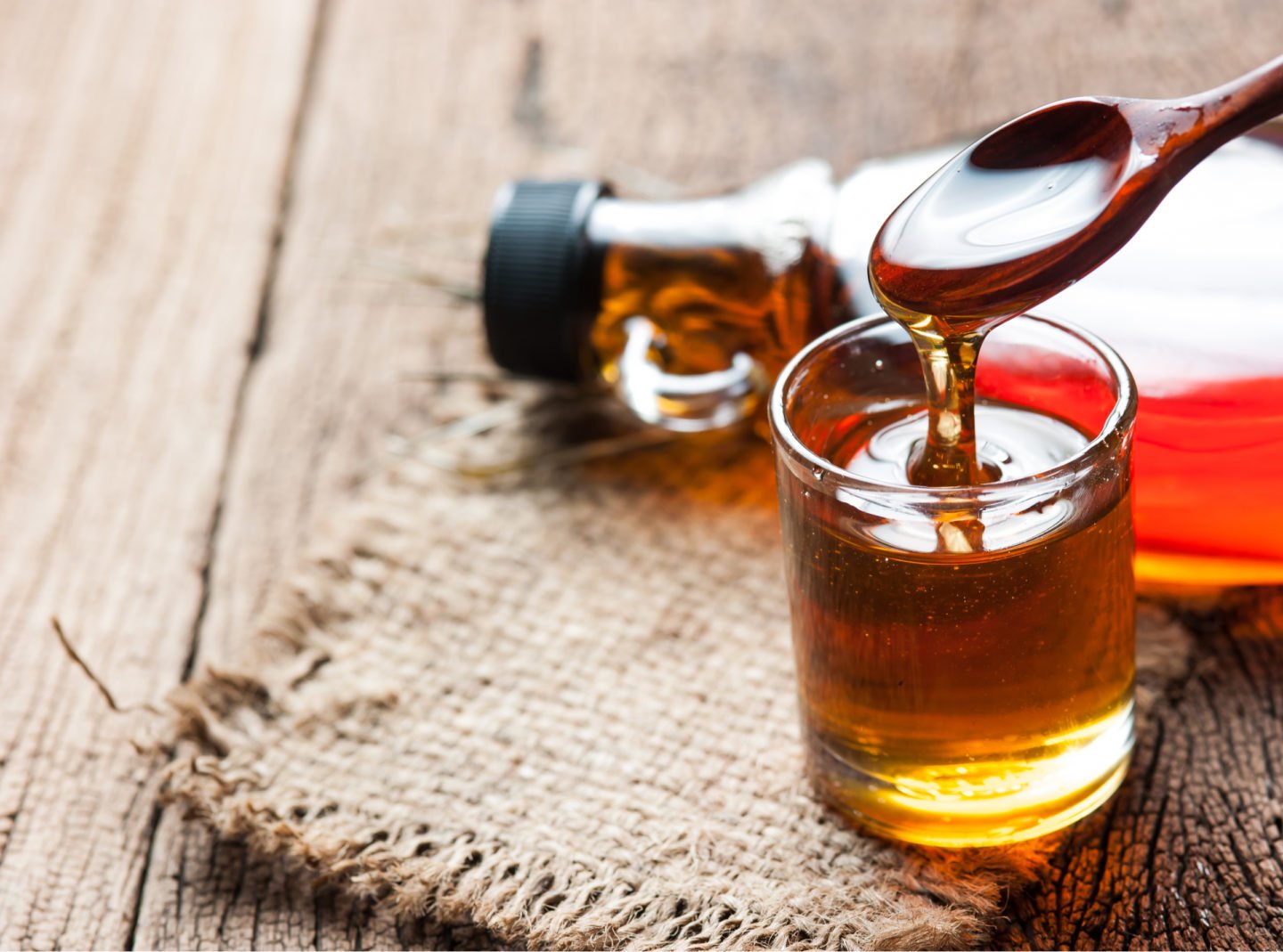
Although maple syrup presents a different consistency than vanilla bean paste, it can be a great substitute, especially when you run out of all the other available options and have maple syrup in your pantry. Maple syrup comes in different grades depending on the color. For baking purposes and as a substitute for vanilla paste, you can use maple syrups that are darker in color.
Maple syrup has a distinct aroma that is incomparable to other scents but has a rich taste and hint of sweetness that can be a great addition to your recipe in the absence of vanilla. I would say that maple syrup tastes a bit like vanilla, which is a great thing. You can also taste a bit of caramel and prune taste, so it’s perfect for cookies and other pastries.
When using maple syrup as an alternative, you can use the same amount as the vanilla paste or adjust it manually according to your liking.
6) Almond Extract
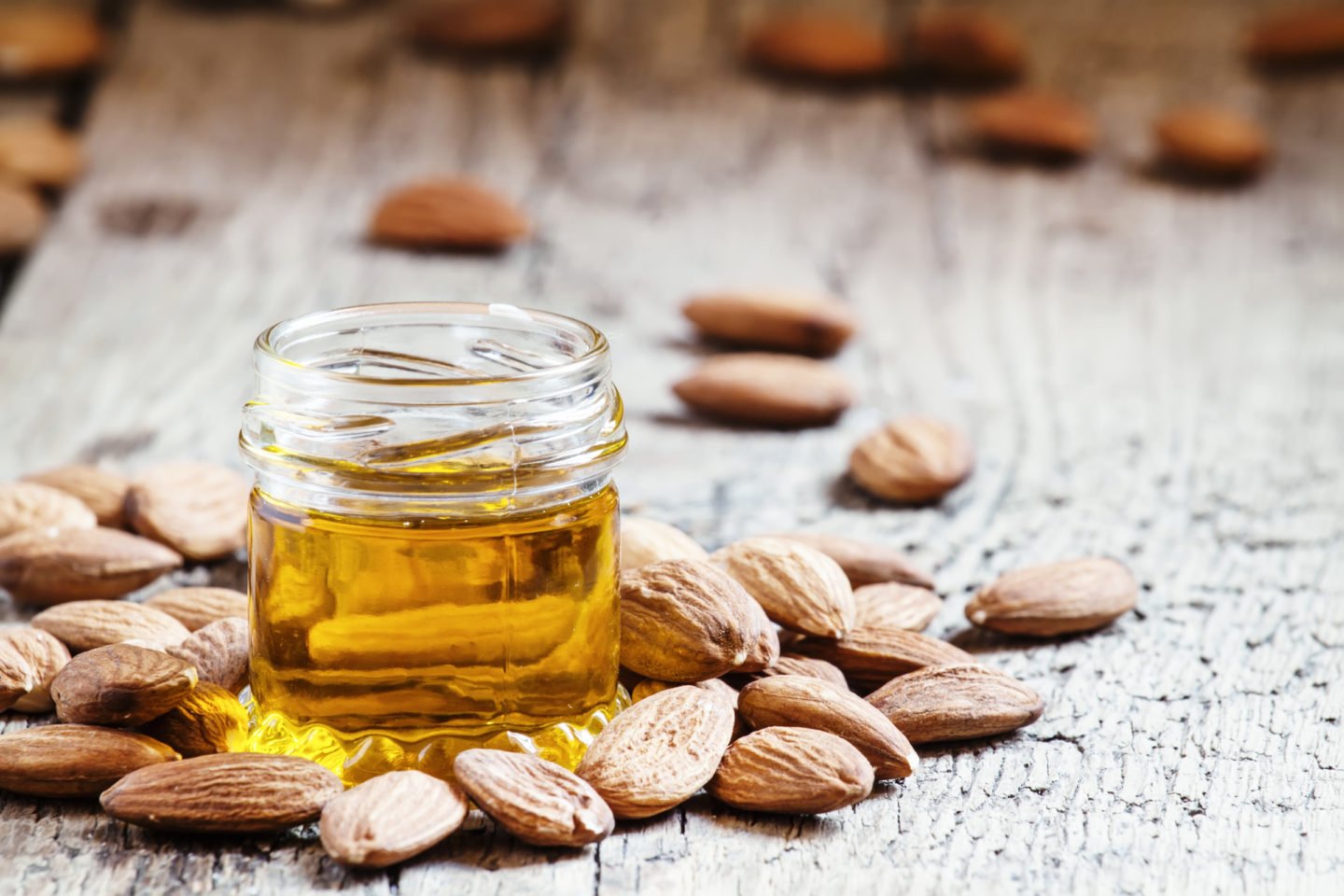
Almond extract is one of the most overlooked vanilla substitutes. Although made from a nut, the almond extract has a strong aroma that makes it an excellent ingredient for baking and cooking. In addition, its consistency resembles that of vanilla extract, and you can use it as a substitute or as an addition.
Bitter almonds are mixed with water and oil to create the extract. A toxic compound found in bitter almonds called amygdalin is broken down and removed during extraction. As a result, benzaldehyde is produced that’s responsible for the extract’s strong nutty aroma, a scent comparable to vanilla.
When using almond extract as a substitute, you can expect a subtle yet pleasing effect on baked goods, as well as a semi-sweet taste with a hint of bitterness. In addition, when replacing vanilla bean paste, you can use the exact amount of almond extract.
7) Honey
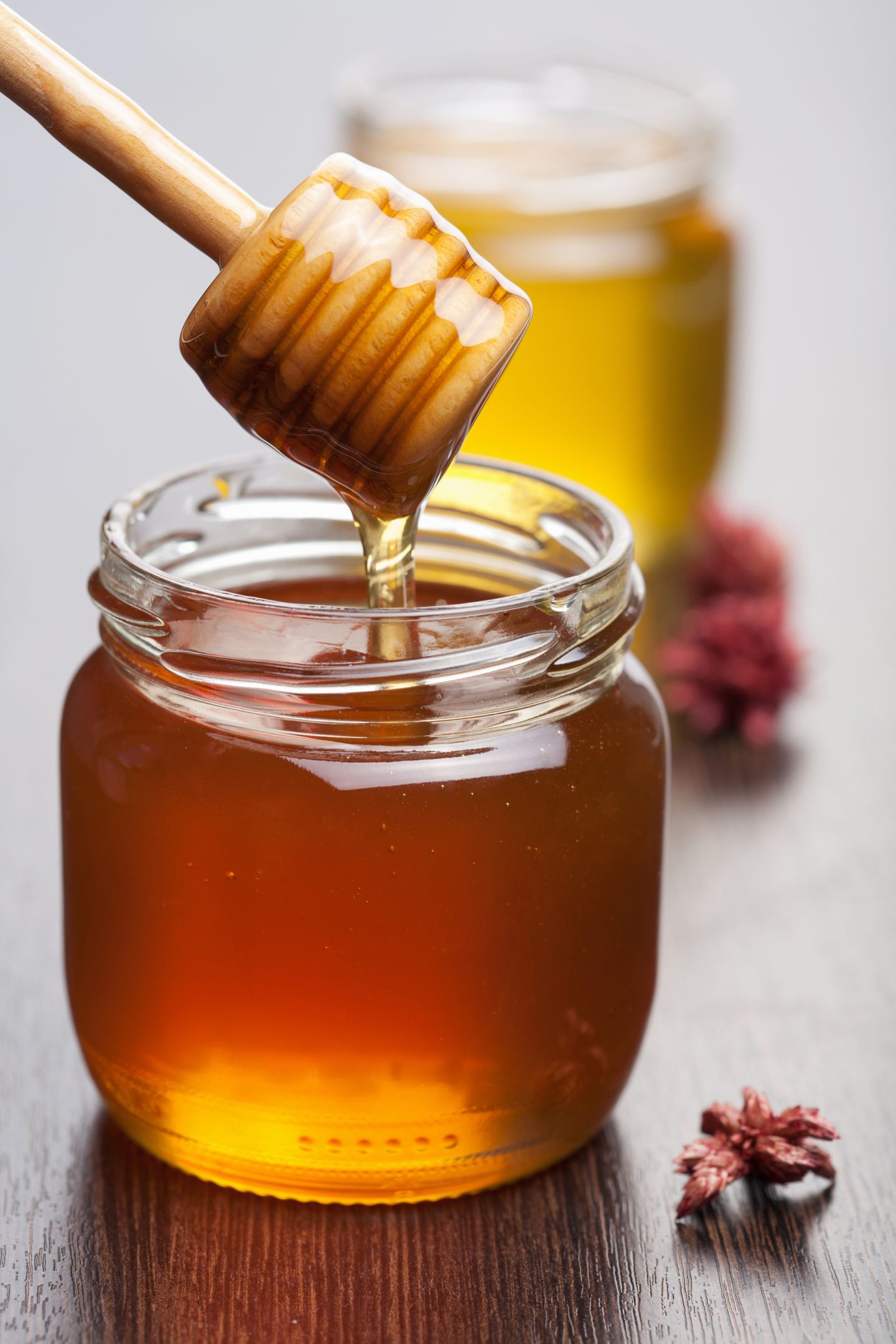
Honey is probably the least expected item on this list. However, both vanilla and honey are nature’s top flavors, and you can use one on behalf of the other. Honey has a thick consistency close to vanilla bean paste, has a sweet taste, and has a fresh, mellow aroma. In fact, most baked goods labeled “healthy” use honey as a sweetener in place of table sugar.
Raw honey has numerous vitamins, including B vitamins riboflavin, niacin, pantothenic acid, and essential minerals such as copper, calcium, iron, phosphorus, magnesium, manganese, and zinc. All these contribute to the health benefits brought by consuming raw honey, making it not just a favorite flavoring but a healthy sweetener, too.
Since honey already has the same consistency as vanilla bean paste, you can use the same amount when substituting for cookies, cakes, and other more sweet recipes. However, when using honey for lighter desserts, you can dilute it with water in a 1:1 ratio to lessen the sweetness.
Summary
Here's a quick rundown of the best vanilla bean paste substitutes mentioned above, Check out the unique qualities of each and see which ones fit your cooking or baking needs.
| Substitute | Notes |
|---|---|
| Vanilla Beans | Scrape the seeds from a whole pod and use that for every tablespoon of vanilla bean paste. |
| Vanilla Extract | Use pure vanilla extract for a much closer taste and essence to vanilla bean paste. |
| Vanilla Powder | Excellent substitute to vanilla bean paste. Has a rich, strong flavor and firmer consistency. |
| Vanilla Essence | Cheaper than pure vanilla extract, but still has a prominent vanillin flavor. |
| Maple Syrup | Not the same consistency as paste, but has a distinct aroma and rich flavor just like vanilla. |
| Almond Extract | Has a semi-sweet taste with a hint of bitterness. Use the same amount as vanilla bean paste. |
| Honey | Use the same amount when substituting. Dilute with water in a 1:1 ratio for lighter desserts. |
Related Questions
A spice from vanilla orchid (Vanilla planifolia), vanilla is one of the most famous ingredients when it comes to baking. The flavor comes from the plant’s seeds located in the pods produced after pollination and has been a favorite addition since ancient times. Due to the high demands, scientists have been trying to mass-produce vanilla pods, and in 1841, it was discovered that vanilla orchids could be hand-pollinated.
The most common forms of vanilla commercially available are vanilla bean paste, vanilla extract, vanilla powder. Some manufacture synthetic vanilla flavoring from vanillin and market it as a more affordable vanilla essence. Although vanilla is a cherished flavoring ingredient in its own right, it is also used to improve the flavor of other things, such as chocolate, caramel, custard, coffee, ice cream, and others, as they complement each other well.
Vanilla powder is a great alternative for vanilla bean paste. Although it might not give you the same consistency as it’s in powder form, that’s an advantage if you’re after a substitute that won’t ruin your recipe’s consistency. Vanilla powder is just dried vanilla bean pods, and it gives a strong flavor and aroma.
The main difference between the paste and extract is consistency and flavor. As the name implies, vanilla bean paste is thicker, while vanilla extract has a water-like consistency. As for the taste and flavor, vanilla bean paste has sugar and is mostly sweeter, while vanilla extract has no added sugar. The intensity of flavor depends on the manufacturer.
After making vanilla bean paste, you can save the pods and use them to make vanilla sugar, vanilla extract, vanilla bath salt, and as a flavoring to your teas and coffee. To make vanilla sugar, simply burrow the spent vanilla pods in a jar filled with sugar. Steeping them in hot water also gives an aroma to your drinks and adds character to them.
Can you make vanilla bean paste at home?
Yes! Here’s what you need and why you need them:
- 100 grams vanilla bean pods - when purchasing vanilla pods, make sure that they are plump and fresh so that you can get the best result. Dry, thin pods have lesser seeds inside, meaning fewer vanillin compounds and less aroma and flavor.
- 5 oz rum - Vanilla bean paste requires vanilla extract. And since we’re making the paste from scratch, we need to induce the extraction process with the help of rum. The rum should have proof of at least 80. This will help extract the vanilla flavor.
- 3 oz sugar - Sugar is another ingredient in making vanilla extract. This acts as a stabilizer and an agent to counteract the strong effects of alcohol.
- 7 oz water - Adding water to vanilla will dissolve and extract most of the flavor compounds in the vanilla bean seeds, something that alcohol alone can’t do. Usually, vanilla extracts have 65% water, and so we will copy that proportion.
- 1 tablespoon corn syrup - Vanilla tends to crystallize when suspended, and adding corn syrup will prevent crystals from forming.
- ¾ teaspoon xanthan gum - Xanthan gum is responsible for the vanilla paste’s thick consistency.
- 1 tablespoon of fresh lime or lemon juice - Lemon or lime juice balances the sweetness and adds texture to the mixture.
Directions:
- Prepare the vanilla beans. Start by breaking the pods apart to expose the seeds.
- Start soaking. Place the split beans in a large ziplock bag and fill it with the rum. Ensure that no air will remain in the bag that will hinder the process. Let it soak for at least a week.
- Scrape the seeds. After soaking the beans with rum, separate the liquid and place it in a saucepan. Scrape the vanilla bean seeds from the pods, but don’t discard the empty pods, as they act as a natural thickening agent to your paste. Mix the seeds and pods with the liquid.
- Start boiling. Add sugar, corn syrup, water, and lemon juice and mix the ingredients well. Start the fire and bring the mixture to a boil while constantly stirring to prevent clumping. Continue boiling the mixture for 5 minutes. And if ever it does form clumps, just keep going. Don’t panic.
- Blend. Remove the pods from the mixture and gently transfer the mixture to a blender (Don’t discard; empty pods can be used for vanilla sugar). Remember to save space for blending. Don’t fill the pitcher to the brim. Turn the blender to the lowest speed setting, then gently increase the speed to achieve a wavy motion in the mixture.
- Add the xanthan gum. While the blender is still on, gently remove the pitcher’s lid and slowly add the xanthan gum by dusting it throughout the mixture. The blender’s motion will distribute the xanthan gum, so be sure to add it very slowly to allow proper incorporation.
- Check mixture consistency. We are trying to achieve a well-blended thick consistency, and one way to measure if you need more xanthan gum is by turning the blender off and letting the mixture rest for a while. You might need more gum powder once you notice the vanilla seed rising to the top. However, if the seeds are evenly distributed after settling, you’ve just completed the process.
- Store and enjoy. Using a funnel, slowly transfer the mixture to an airtight jug. The seeds might settle at the bottom of the jar once stored for a while, but you can gently shake the mixture to distribute the seeds again and enjoy using it over your favorite desserts.
Recipe
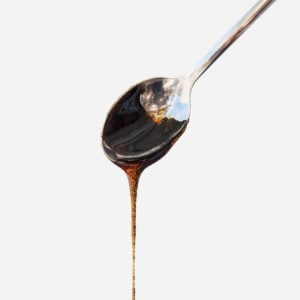
Homemade Vanilla Bean Paste
Ingredients
- 100 grams vanilla bean pods
- 5 oz rum at least 80 proof
- 3 oz sugar
- 7 oz water
- 1 tbsp corn syrup
- ¾ tsp xanthan gum
- 1 tbsp fresh lime or lemon juice
Instructions
- Prepare the vanilla beans. Start by breaking the pods apart to expose the seeds.
- Start soaking. Place the split beans in a large ziplock bag and fill it with the rum. Ensure that no air will remain in the bag that will hinder the process. Let it soak for at least a week.
- Scrape the seeds. After soaking the beans with rum, separate the liquid and place it in a saucepan. Scrape the vanilla bean seeds from the pods, but don’t discard the empty pods, as they act as a natural thickening agent to your paste. Mix the seeds and pods with the liquid.
- Start boiling. Add sugar, corn syrup, water, and lemon juice and mix the ingredients well. Start the fire and bring the mixture to a boil while constantly stirring to prevent clumping. Continue boiling the mixture for 5 minutes. And if ever it does form clumps, just keep going. Don’t panic.
- Blend. Remove the pods from the mixture and gently transfer the mixture to a blender (Don’t discard; empty pods can be used for vanilla sugar). Remember to save space for blending. Don’t fill the pitcher to the brim. Turn the blender to the lowest speed setting, then gently increase the speed to achieve a wavy motion in the mixture.
- Add the xanthan gum. While the blender is still on, gently remove the pitcher’s lid and slowly add the xanthan gum by dusting it throughout the mixture. The blender’s motion will distribute the xanthan gum, so be sure to add it very slowly to allow proper incorporation.
- Check mixture consistency. We are trying to achieve a well-blended thick consistency, and one way to measure if you need more xanthan gum is by turning the blender off and letting the mixture rest for a while. You might need more gum powder once you notice the vanilla seed rising to the top. However, if the seeds are evenly distributed after settling, you’ve just completed the process.
- Store and enjoy. Using a funnel, slowly transfer the mixture to an airtight jug. The seeds might settle at the bottom of the jar once stored for a while, but you can gently shake the mixture to distribute the seeds again and enjoy using it over your favorite desserts.

Leave a Reply